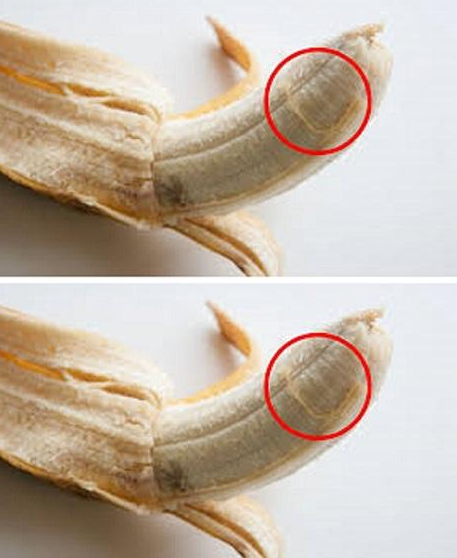(Note: This is an informational article, but here’s a playful way to format it as if you were working with the banana itself.)
-
1 ripe banana (with peel)
-
Your curiosity
-
A closer look at the anatomy of fruit
Preparation (or Explanation):
-
Peel Your Banana Slowly: As you peel the banana, you’ll notice several thin, fibrous strands running lengthwise between the peel and the fruit.
-
Meet the Phloem Bundles: These are part of the banana’s vascular system. The phloem is responsible for transporting nutrients like sugars and water throughout the fruit.
-
Why They Matter: Without phloem bundles, the banana wouldn’t get the proper distribution of essential nutrients during its growth, resulting in underdeveloped or uneven fruit.
-
Are They Edible?: Yes! While the texture can be a bit fibrous, they are completely safe and even beneficial, containing additional fiber and nutrients.
Serving and Storage Tips:
-
Eat Them or Leave Them: If the texture bothers you, feel free to remove them. But keeping them on can add extra fiber to your diet.
-
Smoothie Hack: If you blend bananas, leave the fibers on—they disappear in texture but add to the nutrition.
-
Storing Bananas: Keep bananas at room temperature. Once ripe, you can refrigerate them to slow ripening. The fibers won’t be affected either way.
Variants (Fun with Bananas):
-
Green Bananas: Firmer, with less noticeable fibers, often used for cooking (plantain-style).
-
Overripe Bananas: The fibers tend to soften and become almost unnoticeable—great for baking.
-
Banana Chips: Phloem bundles are usually still present, but their texture is masked by the crisping process.
-
Banana Bread: The phloem blends right in, adding subtle texture and fiber.
FAQ:
Q: What are the banana strings actually called?
A: They’re called phloem bundles, and they’re part of the banana’s vascular system.
Q: Are banana strings healthy?
A: Yes! They contain fiber and trace nutrients, just like the rest of the banana.
Q: Why do some bananas have more strings than others?
A: It can vary based on ripeness and variety. Slightly underripe bananas tend to have more visible, firmer fibers.
Q: Can you cook with them?
A: Absolutely. Whether you’re baking, blending, or mashing bananas, the phloem bundles break down just like the flesh.
Q: Should I remove the banana strings before eating?
A: That’s totally up to you. They’re safe to eat but removing them is fine if you don’t like the texture.
